Popular on Food52
Continue After Advertisement
26 Comments
Califood1
June 2, 2019
What is the best way to store brocolli in the frig? I steam it for my dog everyday sometime she won’t eat it . Could be how I’m storing it
hickorystick0
February 22, 2016
The best way to store fresh mushrooms is to take them out of their containers and put them in a large brown paper bag, Do not wash before storing. They will last several weeks without getting moldy. I've found when a bag with a few mushrooms gets pushed back and forgotten - the mushrooms actually dry and can then be stored in any container without refrigeration. They can be easily reconstituted by placing them in water for a few minutes. Be sure to rinse twice then before using.
bas26
September 6, 2015
Years ago I was at the Fancy Food Show in Manhattan. A woman in the Italian pavilion was assembling chunks of Parmesan cheese for sampling and passed on a tip for storing Parmesan that I use to this day. Wrap the Parmesan tightly in plastic wrap. Then wrap tightly in aluminum foil and store in the refrigerator. The cheese will remain fresh and mold free for many months. The key is to make sure there is no air between the plastic wrap and the cheese.
sstiavetti
April 9, 2012
Great suggestions! This is really useful, so I've forwarded it to a bunch of people I know. (an email this feature would be great ;)
wingirls
April 8, 2012
Thanks - all of this is helpful - although I like my oranges and grapefruits cold so when I make fresh juice it is already chilled...
Does anyone have some smart ideas on storage for lettuces and greens? I can't seem to get this right...
Does anyone have some smart ideas on storage for lettuces and greens? I can't seem to get this right...
Sami
April 8, 2012
Lovely! Thank you so much.
Your pictures show the peanut butter in the fridge, but I strongly dislike fridged PB. How long should I look at it for shelf-life?
Your pictures show the peanut butter in the fridge, but I strongly dislike fridged PB. How long should I look at it for shelf-life?
teamom
April 8, 2012
Ah, a further comment about storing basil - every year my father starts a plethora of basil from seed. He doesn't eat it, he just likes to see it grow. Before the plant flowers, and when the stems are strong, I harvest some, usually cutting the plant in two. Like flowers, I take off the lower leaves, then put the stems in H2O. It needs no refrigeration. The bonus is that where the leaves have been removed, roots will appear, and one can actually replant the plant.
teamom
April 8, 2012
ECMenard, thank-you, thank-you! I've been in the US for 10 yrs now, and am on a campaign to teach people NOT to put their coffee in the freezer. Especially coffee that it vacuum packed (my mom does this and it drives me to distraction). Tea does not belong in the fridge/freezer, spices do not either, for all the same reasons that you listed for coffee. Thanks again!
cruzich
April 4, 2012
This is a very helpful article, thanks! One question - you said, "eggs in the United States, unlike in Europe, are washed before sale so they lose their protective outer layer." At what point in the process? I get my eggs from an organic delivery grocer who (I think) gets them straight from the farm - is it OK to store these on the counter?
BoulderGalinTokyo
April 4, 2012
Frozen beans that have been boiled, anyone know how long they last frozen?
LeBec F.
April 4, 2012
if you mean dry beans (adzuki, pinto, cannelini, etc) then>>forever. 1-2 yrs imo.
BoulderGalinTokyo
April 5, 2012
No, dried beans, soaked, then boiled, then frozen. How long to they last in freezer? Thank you.
ECMenard
April 4, 2012
As a person who has worked in the specialty coffee industry, I can tell you that the last place one should store coffee is in the freezer. Coffee is porous and can absorb lingering smells quite easily. What is more, freezing allows water molecules to attach to the bean hastening spoilage. Instead, a person should store coffee like they store red wine: in a cool, dark place. And remember, unused coffee is only good for 14 days after the roast date. So if you don't think you can use it by then, don't buy as much.
LeBec F.
April 3, 2012
This is a very comprehensive and well-done piece, so thank you! I do have differing views/suggestions on four items:
1) citrus (clementines in specific) dry out when stored on a counter. I keep them in the frig.
2)in general, the more surface area exposed to the freezer, the more the 'degradation' of the food item. So with citrus zest, i recommend using a vegetable peeler to remove wide strips to be frozen. To ultimately use the frozen zest, if you want to use in a dessert that includes sugar, chop and add the citrus peel to a recipe's sugar in a mini processor and grind it; the citrus flavor really gets into the sugar this way (this works well for creme brulee, cookies, cakes, buttercreams etc.) If using citrus zest for a non-dessert, mince by hand the amount you need or run the large piece of peel over a microplaner.
3) Beef and Chicken (etc)Stocks: No way do I ever have room in my freezers to store stock. When I make any stock, after chilling and removing the fat layer, I significantly reduce/cook down the stock to a rather rubbery dark colored 'demi glace' (half ice). I pour the demi into a rectangular tub, freeze it, flip it out onto a cutting board and cut it into cubes and then toss the cubes into a tub or ziploc bag. (Waste of saran to wrap each cube separately.)
4) Soup and sauce storage: Black plastic rectangular take-out containers are ideal for freezing soups and sauces, but I use them to hold/give shape to the food, not to store the food. I line my rectangles with saran that hangs over the sides. I fill the saran with a pre-measured amount of soup or sauce or stew (like 1 or 2 people's worth of soup.) Then I place the containers on a rimmed sheet pan and freeze them flat. Once frozen, i flip out the containers and tightly wrap the overhanging saran - around the product. I label the product and stack them in a ziploc bag.(This takes up much less space than stacked up containers with their raised lids.) Rectangles and squares fit much better than rounds into a packed freezer.
I practice these techniques with liquids because I am a batch cook i.e. I always make and freeze multiple servings of each thing. For soups and stews, it's usually at least 10 servings. It hardly takes any more time to cook 10 servings of something than it does to cook 4 servings of something.
1) citrus (clementines in specific) dry out when stored on a counter. I keep them in the frig.
2)in general, the more surface area exposed to the freezer, the more the 'degradation' of the food item. So with citrus zest, i recommend using a vegetable peeler to remove wide strips to be frozen. To ultimately use the frozen zest, if you want to use in a dessert that includes sugar, chop and add the citrus peel to a recipe's sugar in a mini processor and grind it; the citrus flavor really gets into the sugar this way (this works well for creme brulee, cookies, cakes, buttercreams etc.) If using citrus zest for a non-dessert, mince by hand the amount you need or run the large piece of peel over a microplaner.
3) Beef and Chicken (etc)Stocks: No way do I ever have room in my freezers to store stock. When I make any stock, after chilling and removing the fat layer, I significantly reduce/cook down the stock to a rather rubbery dark colored 'demi glace' (half ice). I pour the demi into a rectangular tub, freeze it, flip it out onto a cutting board and cut it into cubes and then toss the cubes into a tub or ziploc bag. (Waste of saran to wrap each cube separately.)
4) Soup and sauce storage: Black plastic rectangular take-out containers are ideal for freezing soups and sauces, but I use them to hold/give shape to the food, not to store the food. I line my rectangles with saran that hangs over the sides. I fill the saran with a pre-measured amount of soup or sauce or stew (like 1 or 2 people's worth of soup.) Then I place the containers on a rimmed sheet pan and freeze them flat. Once frozen, i flip out the containers and tightly wrap the overhanging saran - around the product. I label the product and stack them in a ziploc bag.(This takes up much less space than stacked up containers with their raised lids.) Rectangles and squares fit much better than rounds into a packed freezer.
I practice these techniques with liquids because I am a batch cook i.e. I always make and freeze multiple servings of each thing. For soups and stews, it's usually at least 10 servings. It hardly takes any more time to cook 10 servings of something than it does to cook 4 servings of something.
LeBec F.
April 8, 2012
great, brette. Here are photos:
http://food52.com/recipes/16882_best_way_to_efficiently_freezerstore_soups_broths_and_stews
http://food52.com/recipes/16882_best_way_to_efficiently_freezerstore_soups_broths_and_stews
bas26
September 8, 2015
Great suggestions for freezing items flat. Now I know what to do with those takeout containers. Thanks!
midnitechef
April 3, 2012
Thanks for the meat freezer times, I generally go by a 6 month rule and never freeze fish, I buy it the day I want to cook it.
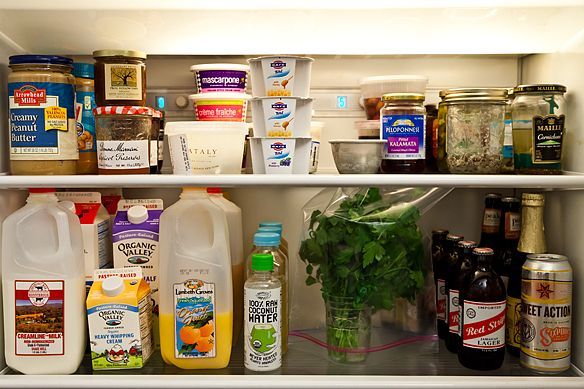
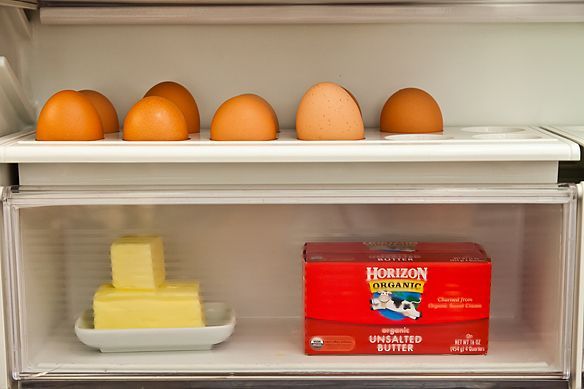
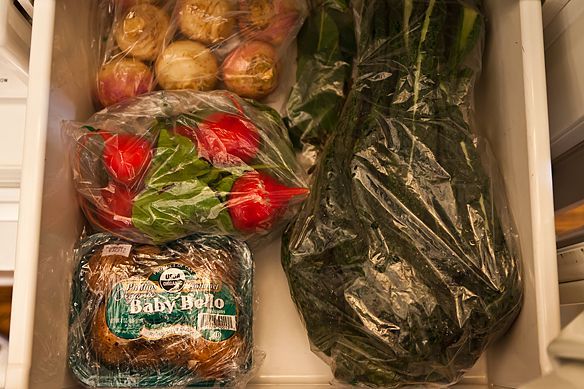
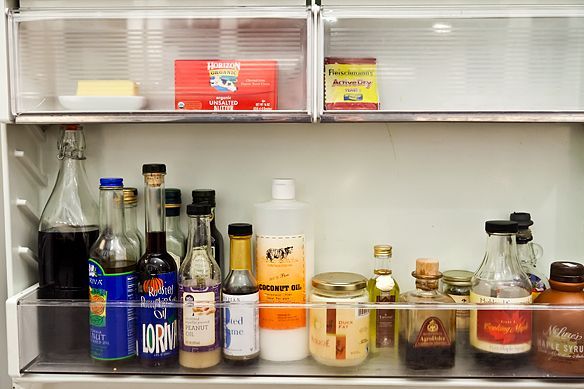
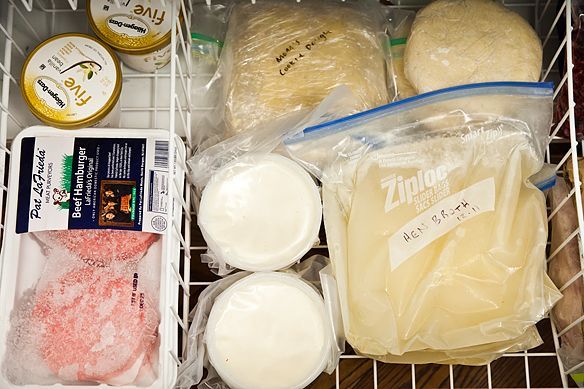
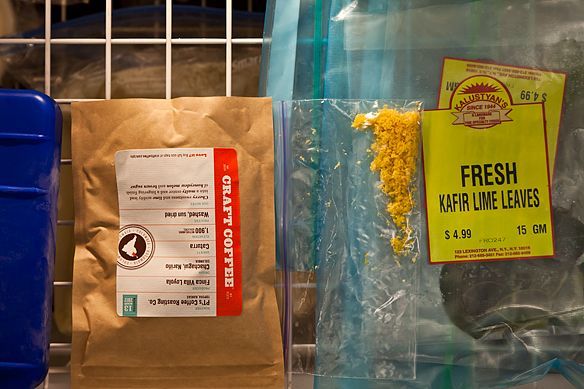

See what other Food52 readers are saying.